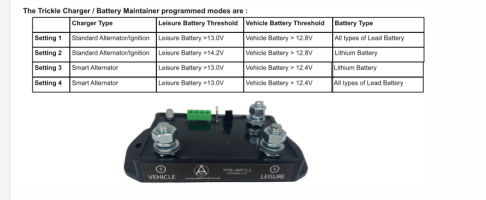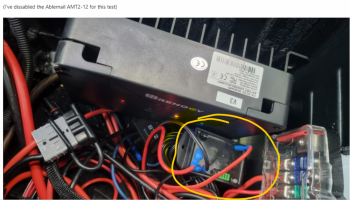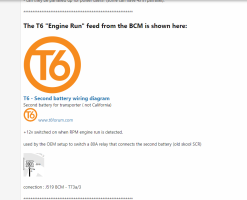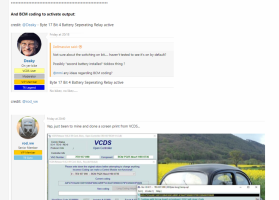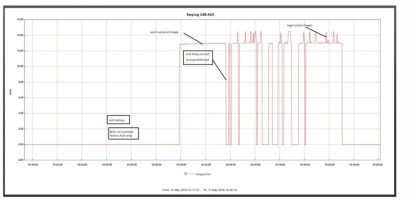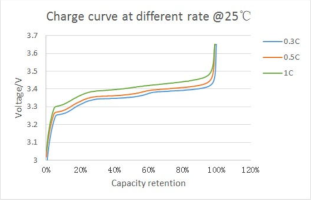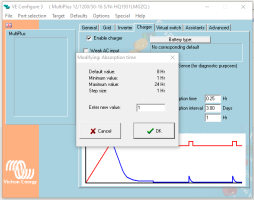I've noticed that "MOST" DC-DC chargers will switch ON when the starter battery voltage creeps up from say EHU charger, back charging from solar, reverse trickle charger etc etc
regardless of thge IGN switch feed.
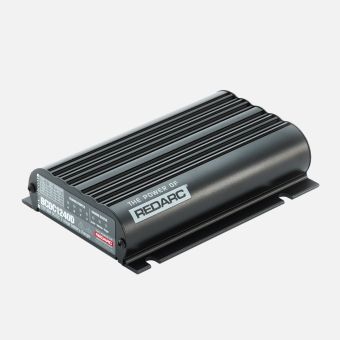
BCDC Classic Under Bonnet 40A DC Battery Charger
The REDARC BCDC1240D is a 12V, 40A In-vehicle DC to DC Battery Charger designed to keep your auxiliary battery charged when driving or with portable solar panels when parked.www.redarc.com.au
View attachment 183619
example:
(IGN not connected - when engine not running) the BCDC 1240 - will switch ON when it sees the starter battery voltage 12.9V
the back OFF again when the starter drops to 12.7v
(*1Tested every 100 seconds)
(this will apply as the BLUE wire id effectively floating as no High 12v signal applied)
View attachment 183620
then with IGN feed connected to blue wire (when engine running):
the units ON above, 12.0v and off bellow 11.0v
View attachment 183621
++++++++++++++++++
its easy enough to test . . .
just reconnect you back trickle charger,
or connect a EHU charger to the starter. . .
then watch the Redarc LEDS
you will find with the engine OFF the Redarc will switch ON when the starter battery feed hits 12.9V
+++++++++++++++++
View attachment 183622View attachment 183623
if you get a chance to test it let us know. . . .
+++++++++

[Guide] DC-DC Charger (for leisure battery) -- How I Done It --
@Farnorthsurfer did you set the Dc-dc to lithium mode for the TN100 battery? Also have you got any more BM2 views showing more days? Yes the unit is set to Lithium profile. Easy enough to do when it was powered up. Yesterday was a flat line all day as it just sat on the drive. Back to work...www.t6forum.com
++++++++++++++
@Loz
i just realised I've already tested it,
and the REDARC does have the AUTO VSR feature. . .

I've detailed them on the spreadsheet on page 1:
DC-DC Charger (for Leisure battery) -- How I Done It --

[Guide] DC-DC Charger (for leisure battery) -- How I Done It --
DC-DC Charger (for Leisure battery) -- How I Done It -- ************************************************** Dellmassive`s -- "how I Done It" -- Thread ************************************************** Kit List And Stuff -- How I Done It & What I Use --...
.

